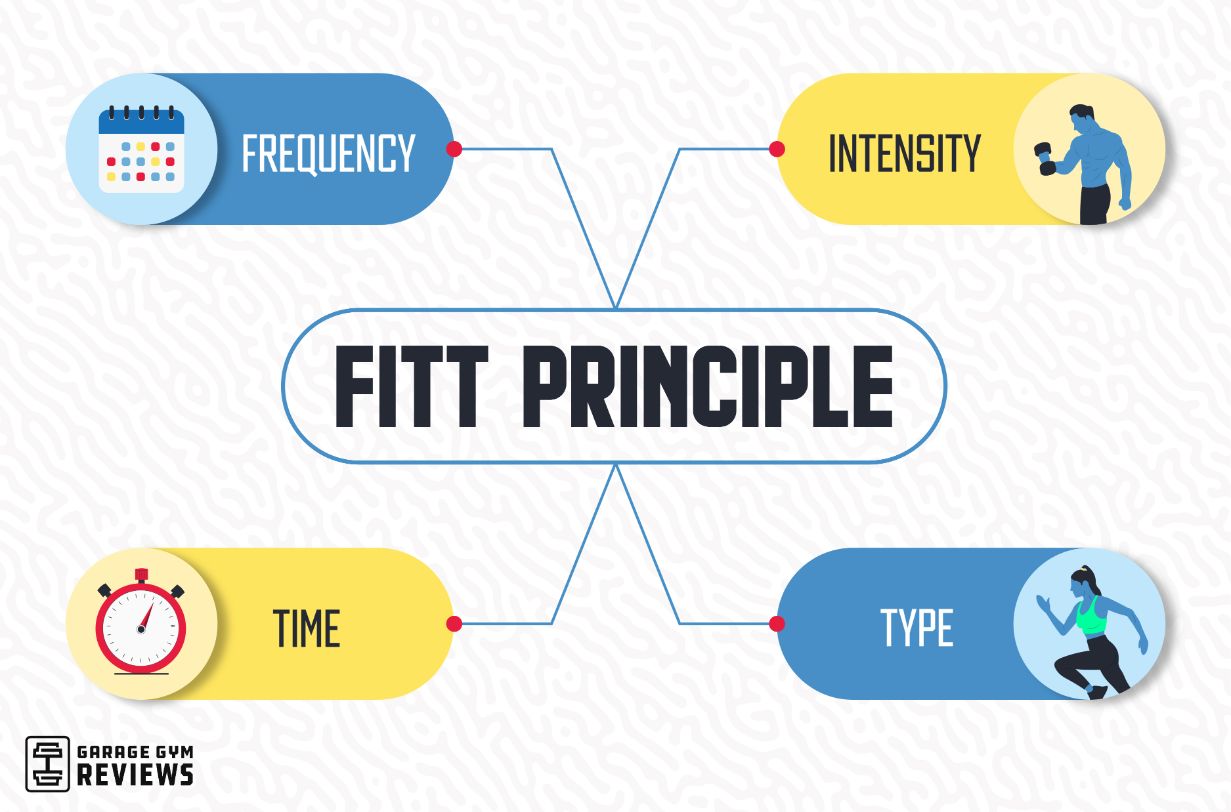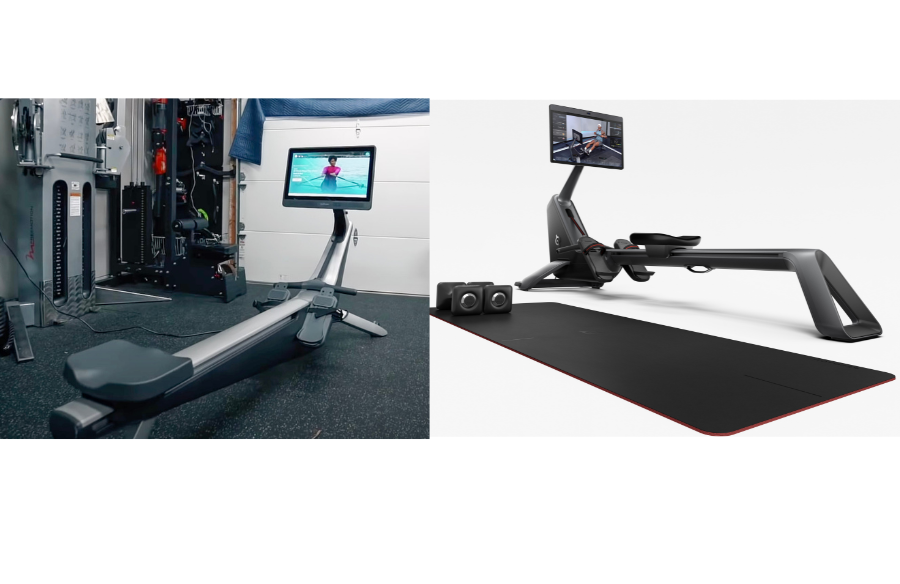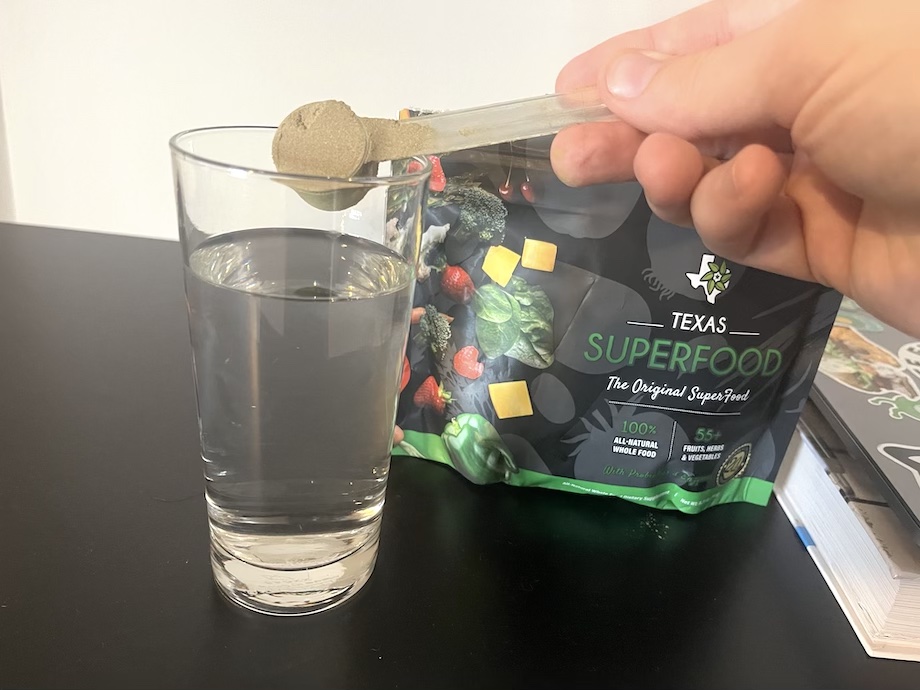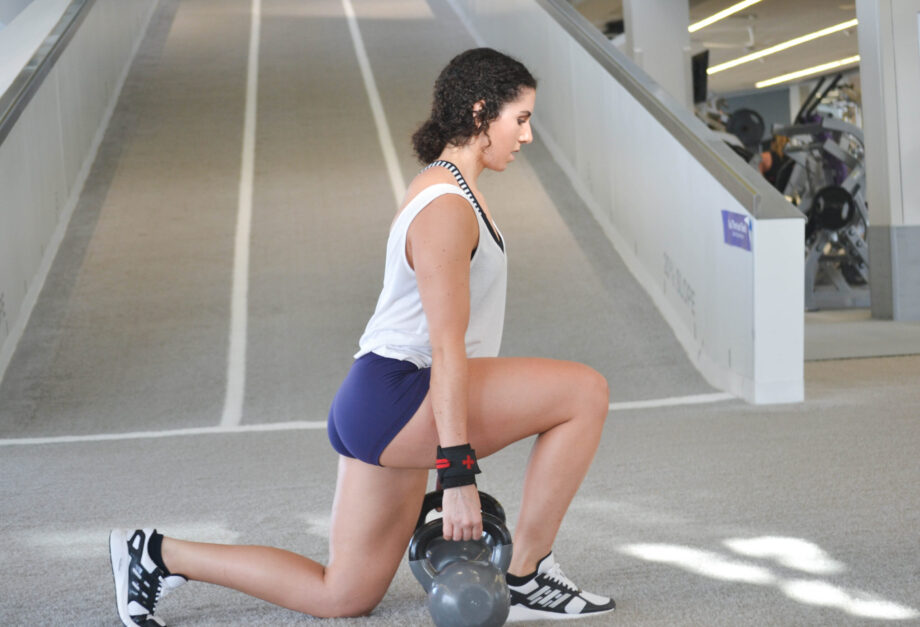The FITT principle is a four-letter acronym summing up the first day of Exercise Science 101.
Ask any experienced personal trainer how much of their programming knowledge they use on a weekly basis, and they’ll probably tell you it can FITT into a one-hour exercise science class.
(Cute, huh?)
The following principles will help you establish a logical training program focused on achieving your goals. When you work your way into the top .1% of all human achievement, we can move on to day two’s lecture.
Quick Look: The FITT Principle
A lot of people try to start their workout plan like they would have as a little kid: all-day pull-ups in the jungle gym, followed by two hours of playing basketball, followed by two more hours of bicep curls. Repeat Monday-Sunday (I basically did this in college).
Fast forward to a time when we all realize we aren’t 10-year-olds anymore, and the kind of exercise we need to stay healthy and push toward fitness goals might need a wee bit more structure.
The variables defined by the FITT principle (frequency, intensity, time, and type) make up every effective fitness program. Each must be aligned to the others to prevent overtraining syndrome1, which can take weeks or even months to recover from.
Think of creating your fitness program the same way you create an RPG character; you only have so many points to allot to each trait. The only way to increase them is by earning more XP by hitting the gym.
RELATED: Best Online Workout Programs
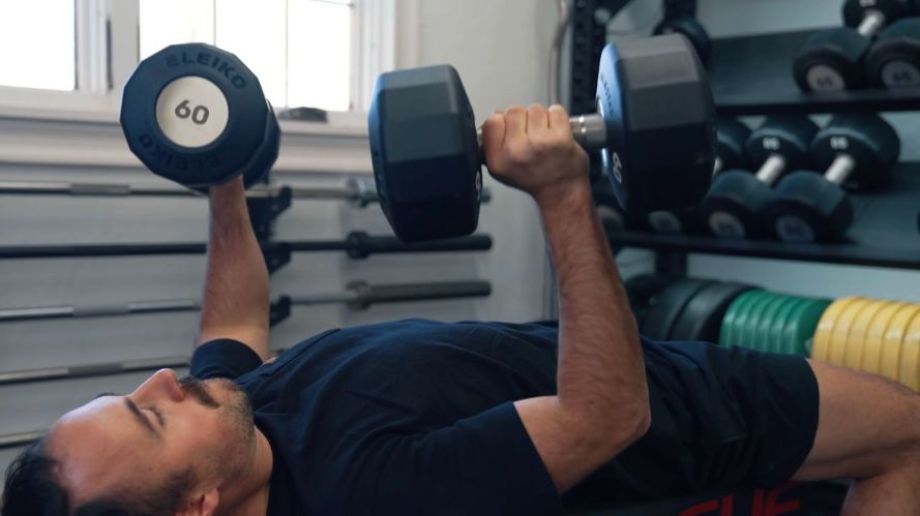
Frequency
Frequency in the FITT principle refers to how often you exercise or how many sessions you do per week.
In the example of my college workout above, the frequency is turned up to 11. With stressors like jobs, kids, spouses, and a body that can’t recover the way it used to, I have to be careful with the frequency of high-intensity exercises and when I take rest days. I’ve seen a lot of people talking about the “squat every day” Sheiko thing, but I haven’t seen anybody in my gym moving big weights with it.
Understanding the importance of rest days2 in restoring energy systems and repairing muscles is just as important as spacing out your workouts for the major muscle groups (note: biceps are not a major muscle group). Training each muscle group to two times a week tends to be the fallback for most.
Intensity
This is how hard you train. Measuring intensity during a workout can be done many different ways, including the “talk test,” keeping an eye on your heart rate, or using an RPE scale3 for rate of perceived exertion.
With resistance training, you could determine intensity by weight on the bar or how many “reps in the tank” you have left. When hypertrophy is the goal, intensity techniques like downsets, supersets, rest-pauses, and many other hyphenated techniques can be used to stimulate specific muscle groups without using maximal weight.
For running and cardio exercise, you could use your pace as a measure of intensity, like the difference between running at a marathon pace or a 5K pace.
Time
Time, being time, is the most nebulous factor in the FITT principle. Time can indicate the number of repetitions of deltoid raises you do on upper body day (“time” here meaning specifically “time under tension”). It can also mean the length of your entire workout, the rest time between sets while strength training, or the length of time you are working during circuits of bodyweight exercises.
You can manipulate all these types of time within your exercise program. Lowering rest periods (increasing training density), is a great way to make progress in your strength training if you have limited access to equipment.
Type
Here is where you get to decide if you’re trying to increase muscular strength with weight training workouts, cardiovascular threshold with prolonged aerobic exercise, or honing a sport-specific skill.
You can choose to be well-rounded, or you pick one thing to specialize in (if competition is on your mind). A bodybuilder will tend not to spend a lot of time doing cardio in the off-season, nor will a marathon runner typically want to stack intense weight lifting workouts on top of race prep (although these things can be great when done in the appropriate training phase).
RELATED: Marathon Record Time
If you’re just training to have fun, be healthy, look better, and kick butt, go ahead and do it all! Since you don’t have something specific to set a PR in, the type of exercise you choose can be anything you enjoy.

Benefits of Using FITT
A popular saying is that you can only train as hard as you can eat and sleep (i.e. recover). While the overtraining boogeyman has stopped more people from working hard than it has saved people from rhabdo, the FITT principle can help you understand how rest and recovery fit into a fitness plan.
Along with a solid understanding of the FITT principle, using tracking tools like a notepad and heart rate monitor can help you stay within your pre-defined boundaries (intensity is the easiest thing to accidentally increase when you’re having a good time). This is especially useful if you need to hit a target heart rate in your training.
Some other benefits of understanding the FITT principle include:
- It can give your workouts structure
- It could potentially prevent injuries by reducing the risk of overtraining
- It gives you clear options for how to change up your workouts
- It can add variety to your workouts
Applying FITT to Your Training
Everyone who likes lifting weights and has outgrown “curls for two hours every day” knows the term “periodization.” “Periodization” is a cool way to say “FITT principle” when you’re rockin’ Zubazz and a cut-off sweatshirt in the weight room.
The way you keep making progress with strength, cardio, weight loss, or muscle growth is to vary up each element of FITT. This could look like:
- Frequency: Going from working out 2 or 3 days a week to 3 or 4 days a week
- Intensity: Pushing the pace on your runs or using heavier dumbbells
- Time: Increasing your walk from 30 to 40 minutes, or decreasing the rest you take between weight sets
- Type: Adding in a day of strength training or using the rower instead of the elliptical
After a period of cultivating what intellectuals refer to as “newbie gainz,” you can’t simply add more intensity to each workout (weight on the bar, distance run, etc.).
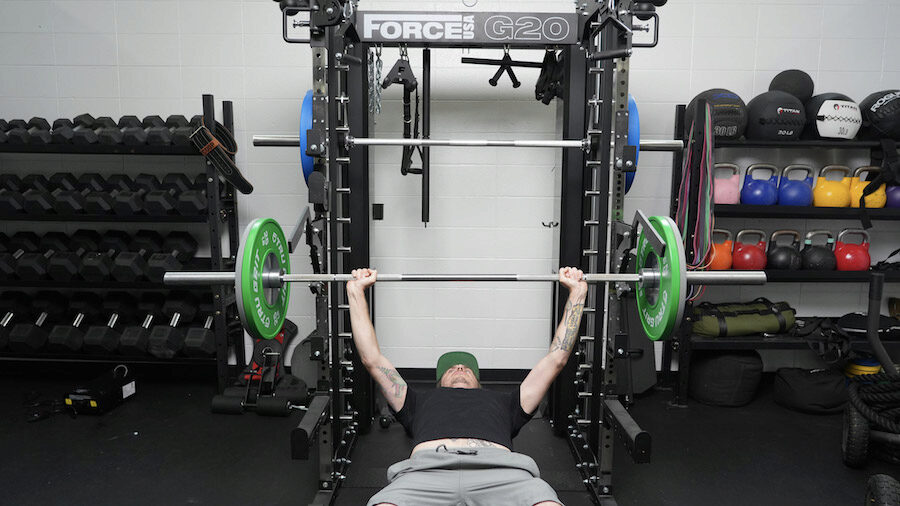
You CAN increase intensity over the course of an entire training block by cycling intensities (I bet you thought I was going to say something else after the word “cycling”). Rather than doing 100% of your 1RM (one-rep maximum) on the bench press every day, you can do something like this:
9-Week Bench Press Wave:
50% of 1RM X 5 sets X 8 reps
55% of 1RM X 5 sets X 8 reps
60% of 1RM X 5 sets X 8 reps
65% of 1RM X 5 sets X 5 reps
70% of 1RM X 5 sets X 5 reps
75% of 1RM X 5 sets X 3 reps
80% of 1RM X 3 sets X 3 reps
85% of 1RM X 3 sets X 3 reps
90% of 1RM X 3 sets X 1 reps
By waving the intensity, you build up to big numbers over the course of a training block. This allows your body to actually make progress. You don’t get stronger by failing the same lifts again and again.
You can apply these same FITT principles to any kind of exercise!
FITT Principle: Final Thoughts
Whatever your current fitness level, these basic periodization principles can be applied to all your training.
There is no magic to it, and all the variables require you to have an understanding of how your body works. Certain types of exercises won’t work as well for you as others, and your recovery needs will be different to the next person’s.
Noted fitness guru William Shakespeare summed it up best:
“…suit the action to the word, the
word to the action; with this special o’erstep not
the modesty of nature…”
FITT Principle: Q&A
Why is the FITT principle important?
It provides a logical framework for improving your fitness level. It also allows you to create a holistic health plan that utilizes many different components of fitness.
Cardiorespiratory health is obviously important, but so is maintaining muscle as we age. Using FITT, you can lay out an effective exercise regimen designed to work on multiple disparate needs.
It’s a lot better than walking into the gym not knowing if you’re going to the free weights or the treadmill.
What are the four principles of FITT?
Covering the entire panoply of physical activity, FITT stands for frequency, intensity, time, and type. Each component needs to match up with the others. Vigorous intensity needs to match up with low frequency, low intensity can match up with high time, and moderate intensity can match up with any other time of moderation.
What is a FITT principle example?
Let’s take cardio workouts as an example.
I think Garage Gym Reviews mentions the CDC’s advisory message to get 150 minutes of activity per week5 in every article published. This may be a hint that this is important.
In order to fit this low-intensity work into our schedule, it can be useful to have a high frequency (such as a 20 minute walk one time every day). Boom, the CDC is appeased.
But what if weight loss is your goal? Or being “in shape” means more to you than being able to walk for 20 minutes at a time? You can throw in more taxing sprints, circuits, and high intensity cardio to train multiple energy systems throughout the week. This is changing the type of work being done, as well as the intensity you are working at. Because this is more challenging, you have to drop the frequency on these, and maybe do them 2-3 times a week along with your walks.
References
- Cardoos, Nathan MD. Overtraining Syndrome. Current Sports Medicine Reports: May/June 2015 – Volume 14 – Issue 3 – p 157-158. doi: 10.1249/JSR.0000000000000145
- 2. ACE Fitness, 8 Reasons to Take a Rest Day. Accessed November 2023.
- Arney BE, Glover R, Fusco A, Cortis C, de Koning JJ, van Erp T, Jaime S, Mikat RP, Porcari JP, Foster C. Comparison of RPE (Rating of Perceived Exertion) Scales for Session RPE. Int J Sports Physiol Perform. 2019 Jul 1;14(7):994-996. doi: 10.1123/ijspp.2018-0637. PMID: 30569764.
- Center for Disease Control, How much physical activity do adults need? Accessed November 2023.


